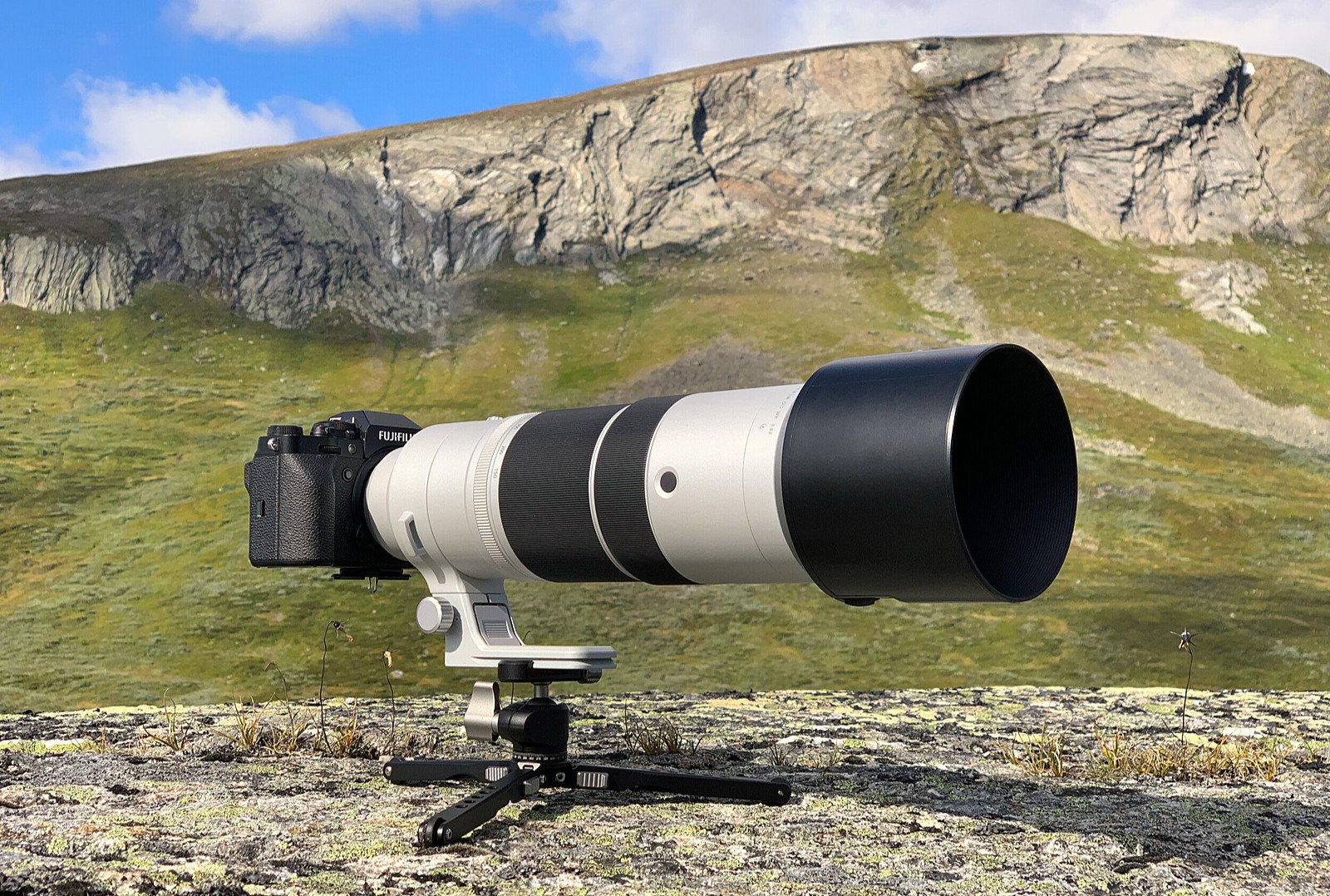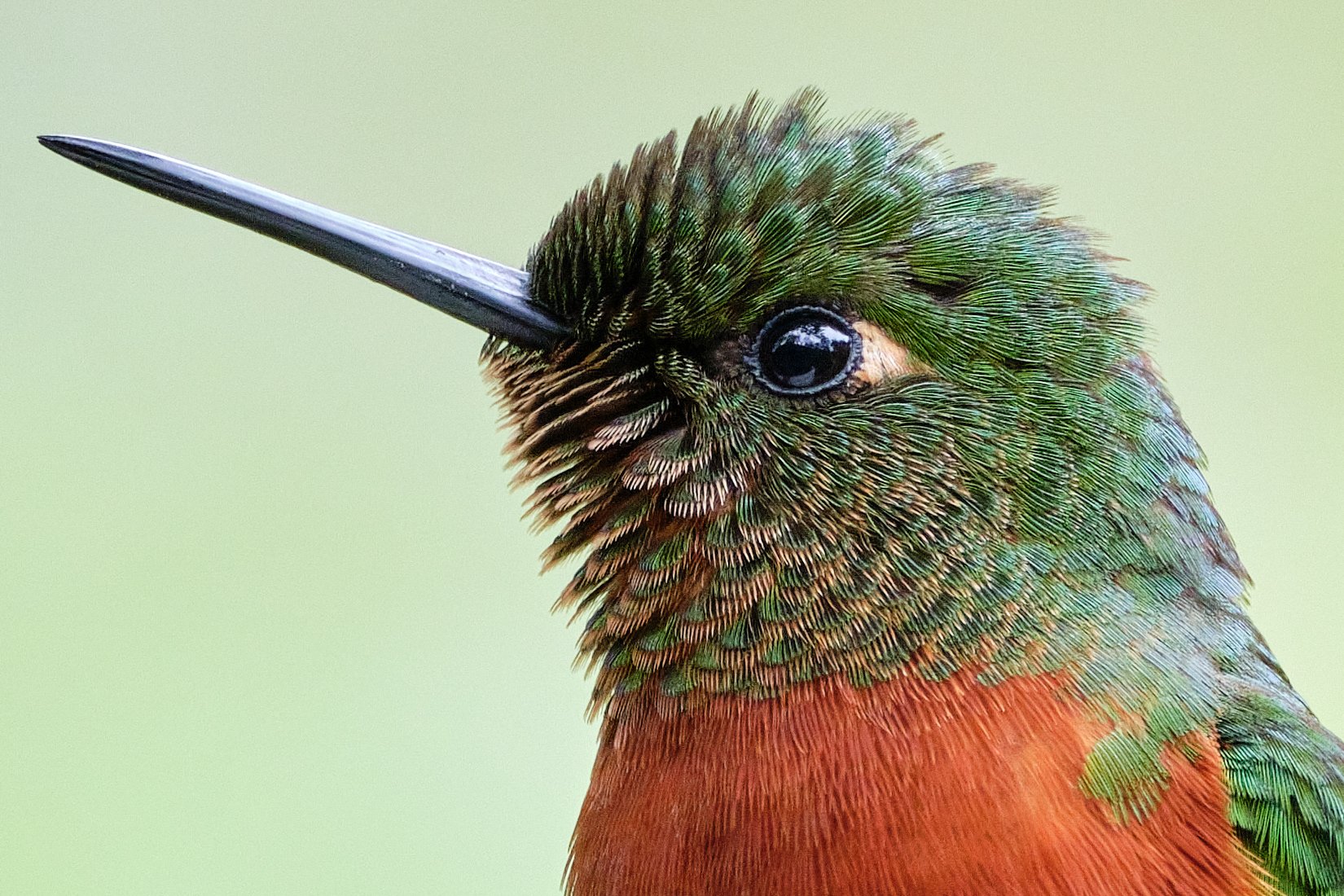In more than six years of shooting wildlife with the Fujinon XF100-400mmF4.5-5.6 lens, I have surprisingly felt little need for an even longer focal length, but that does not mean I would reject such an option :) After all, it is true that I captured two of my photos awarded in international contests with the XF100-400mm with the XF1.4X converter, which is a bit ironic because I rarely use it. Anyway, you can always zoom out a bit, but the missing reach of longer focal length is more difficult to make up, so I did not hesitate and gladly took the opportunity to test the new XF150-600mmF5.6-8 R LM OIS WR lens. Here are my observations and experiences.
For more photos taken with this lens, check out my review of the Fujifilm X-H2S.
I am probably not the only one who was a little surprised by the chosen maximum aperture, which pushes the f-stop number at the long end to f/8. It is not exactly a new thing — the formerly unwritten f/5.6 limit fell long ago with f/6.4 lenses, and in recent years we have also seen the emerging lenses with the widest aperture rising to f/7.1 or even f/8. For telephoto lenses, this is one of the few ways to make them smaller (and potentially lighter), as the laws of optics are rigorous. They define the lens speed as a ratio of the focal length to the diameter of the entrance pupil. It is the apparent diameter of the aperture seen through the front element of the lens. If we invert this formula, with a focal length of 600mm and the widest aperture of 5.6, we can calculate the required diameter of the entrance pupil as
600mm / 5.6 = 107mm
The diameter of the lens front element would therefore have to be at least 115mm — and the sensor size is irrelevant for this. So we have to accept that Fujifilm has opted for a smaller size and weight at the cost of a lower aperture. It varies over the entire focal range as follows (according to the EXIF test images, with the accuracy determined by my ability to smoothly rotate the zoom ring):
- f/5.6: from 150 to 184mm
- f/6.4: from 185 to 315mm
- f/7.1: from 316 to 539mm
- f/8: from 540 to 600mm
The mentioned savings in size and weight compared to competing lenses with a similar range means a 13mm smaller filter diameter (82mm vs. the typical 95mm) and about 0.5 kg less weight (the Fujinon is about 1,605g while similar lenses from Sony or Sigma about 2,100 g). It feels very light and handles perfectly. The same impression was confirmed independently by my two friends using long zooms on full-frame who tried my kit — both very much appreciated the low weight.
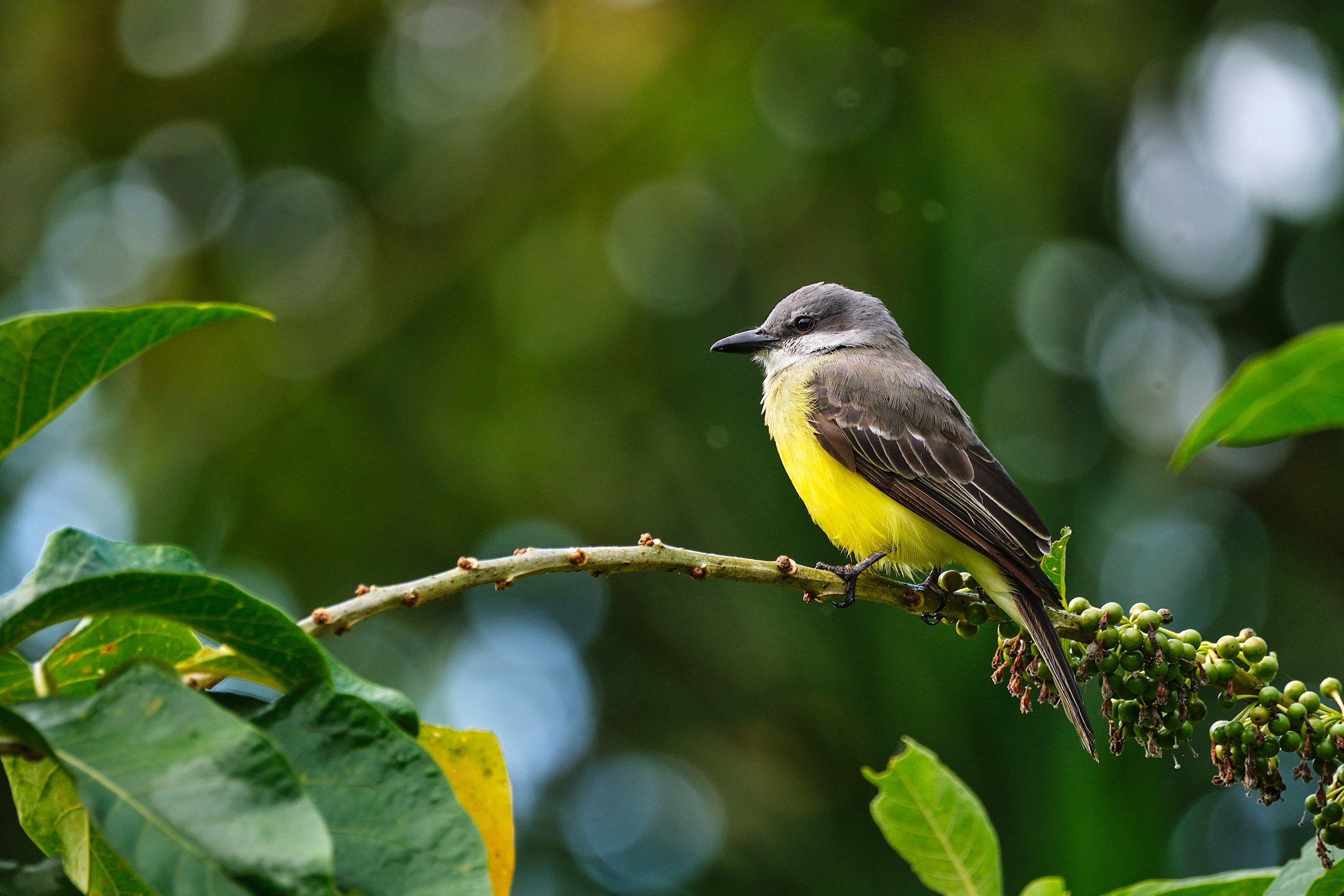
(Fujifilm X-H2S + XF150-600mmF5.6-8 R LM OIS WR at 600mm, f/8, 1/250 sec, ISO 1600)
When comparing the length, the design matters a bit more — Fujifilm has opted for internal zooming and focusing, so the lens size does not change in use. It is a more advanced construction regards handling and lens resistance to dust and moisture, but the compactness suffers somewhat. I use f-stop backpacks, and even in their Medium Slope ICU, the lens fits just barely, and with a creative non-rectangular arrangement of dividers. If you are considering buying the XF150-600mm, keep in mind that it may not get in your backpack.
Regarding controls, the lens offers a trio of rings for focusing, zooming, and setting the aperture (in that order, from the front lens). The three switches set the focus limiter, automatic aperture, and function of four buttons at the lens front barrel. These can either lock the current focus (AF-L), return to the previously stored focus distance (Preset), or trigger focusing (AF) in place of the button on the camera. If you like the Preset option, the Set button below switches stores the currently focused distance.
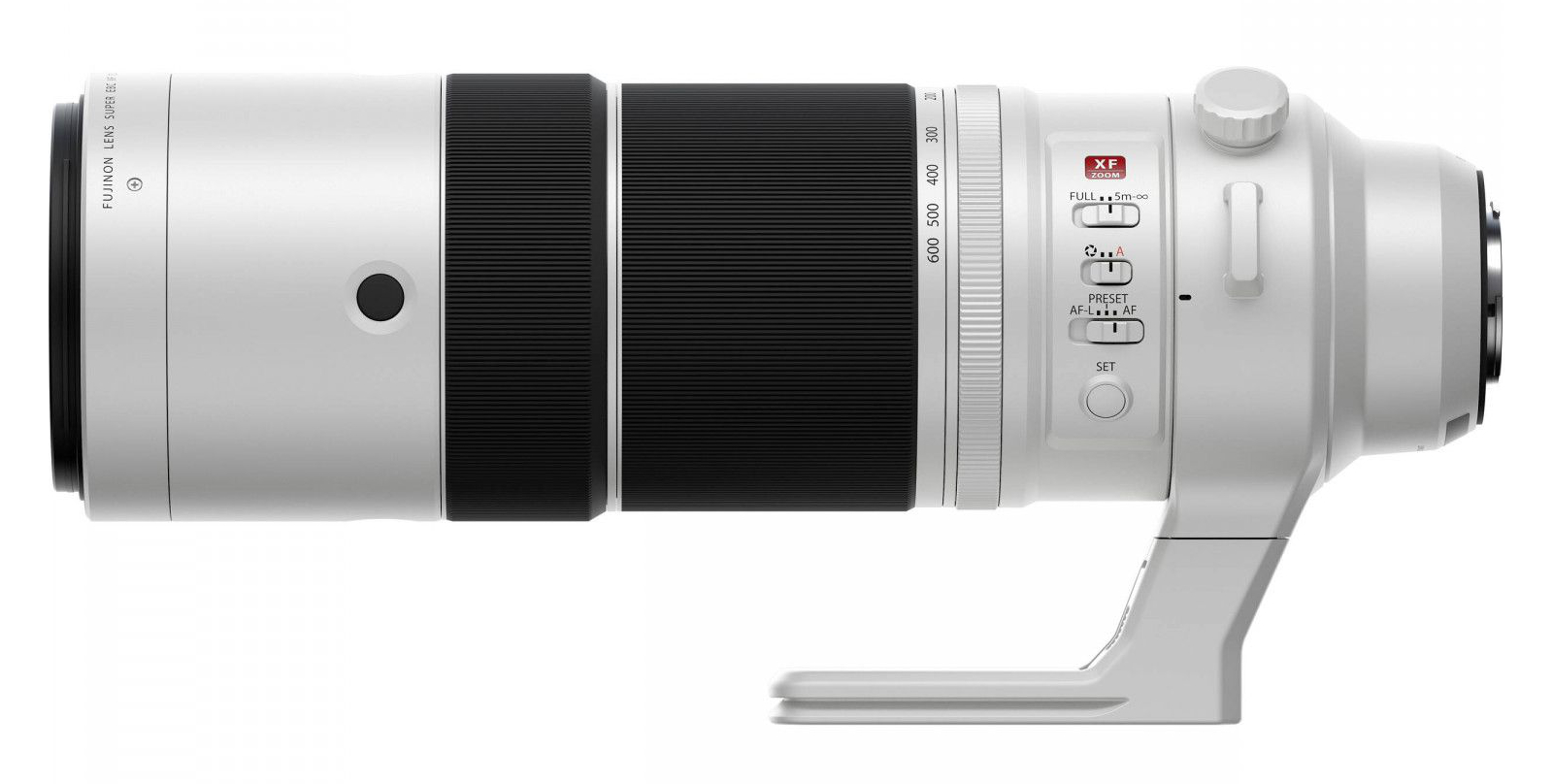
These features are not the first time we have found them on Fujifilm lenses — we already know them from the professional XF200mmF2 R LM OIS WR lens. The new lens also shares with it that the tripod collar foot is compatible with the Arca Swiss quick-release system, so you do not need to add a plate for the many tripod heads — I miss this great feature a lot with the XF100-400mmF4.5-5.6. The foot on XF150-600mm is large enough for a stable mounting and for comfortable carrying in hand. Fans of shoulder straps will be pleased with the two metal attaching points (the strap is included).
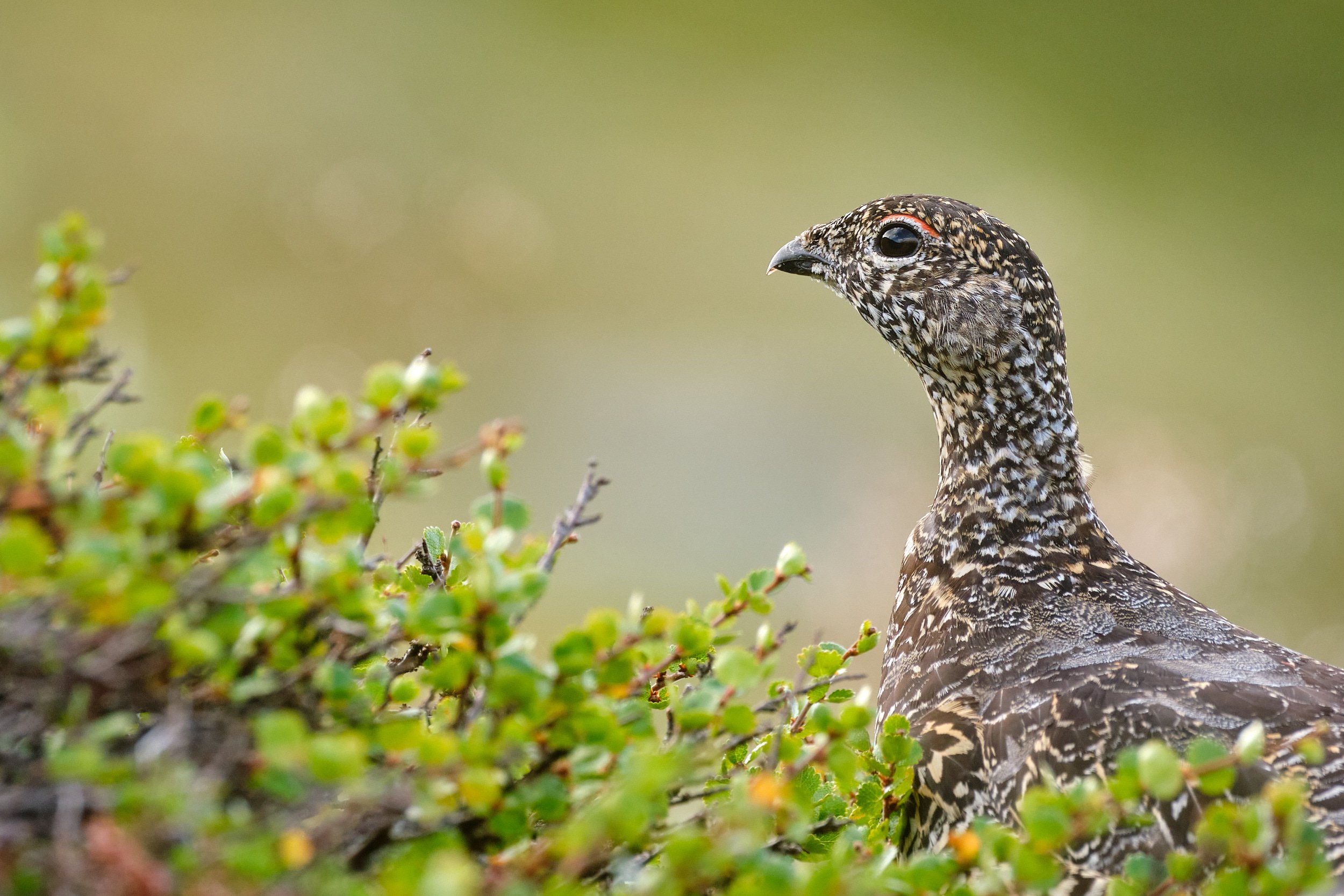
Rock ptarmigan, Norway
(Fujifilm X-T4 + XF150-600mmF5.6-8 R LM OIS WR at 600mm, f/10, 1/125 sec, ISO 1000)
There is probably nothing to add to the construction — everything works as expected, the lens is well-balanced, and controls are pretty much right at hand. Perhaps only the four AF buttons are harder to reach with your hand on the zoom ring. If you need to control both, you are better off sticking with the AF button on the camera.
Mechanically, the lens raises no doubts about the build quality. The internal zoom design eliminates moving elements, so it looks very solid. However, the white material of its barrel is not metal but plastic. It, of course, has also helped to make the lens lighter, and personally, I would say that it does not significantly impact the feeling of the build. I would only have a minor complaint about the lens hood, which is made of a similar material to that of the XF100-400mm, which means that it rattles more than I would like when in contact with hard materials (wood, rock). The solution could be a neoprene protective cover, which wildlife photographers often get anyway.
The main thing, however, is how good the lens is to photograph with. In a word: unexpectedly great! I will not deny that I felt some disappointment when the specs were announced, but I tend to judge by my own experience. So I took the lens on two expeditions — a five-day backpacking trip in Norway’s Dovrefjell national park and a two-week workshop in Ecuador. Both showed me the positives of the lens and the difficulties that shooting with such a long focal length can bring.
The most important thing is that it is great optically and sharp even at 600mm and full aperture — I have no complaints. I suppose that many users will wonder if it is better than the older XF100-400mm zoom paired with the XF1.4X teleconverter. This combination provides just a tad shorter focal length of 560mm at the same aperture in a smaller package. But in this respect, the XF150-600mm is clearly better. From experience, the shorter zoom can deliver solid results with a converter, but it requires more care in postproduction. The new zoom is uncompromising in this regard, and the photos are full of fine detail.
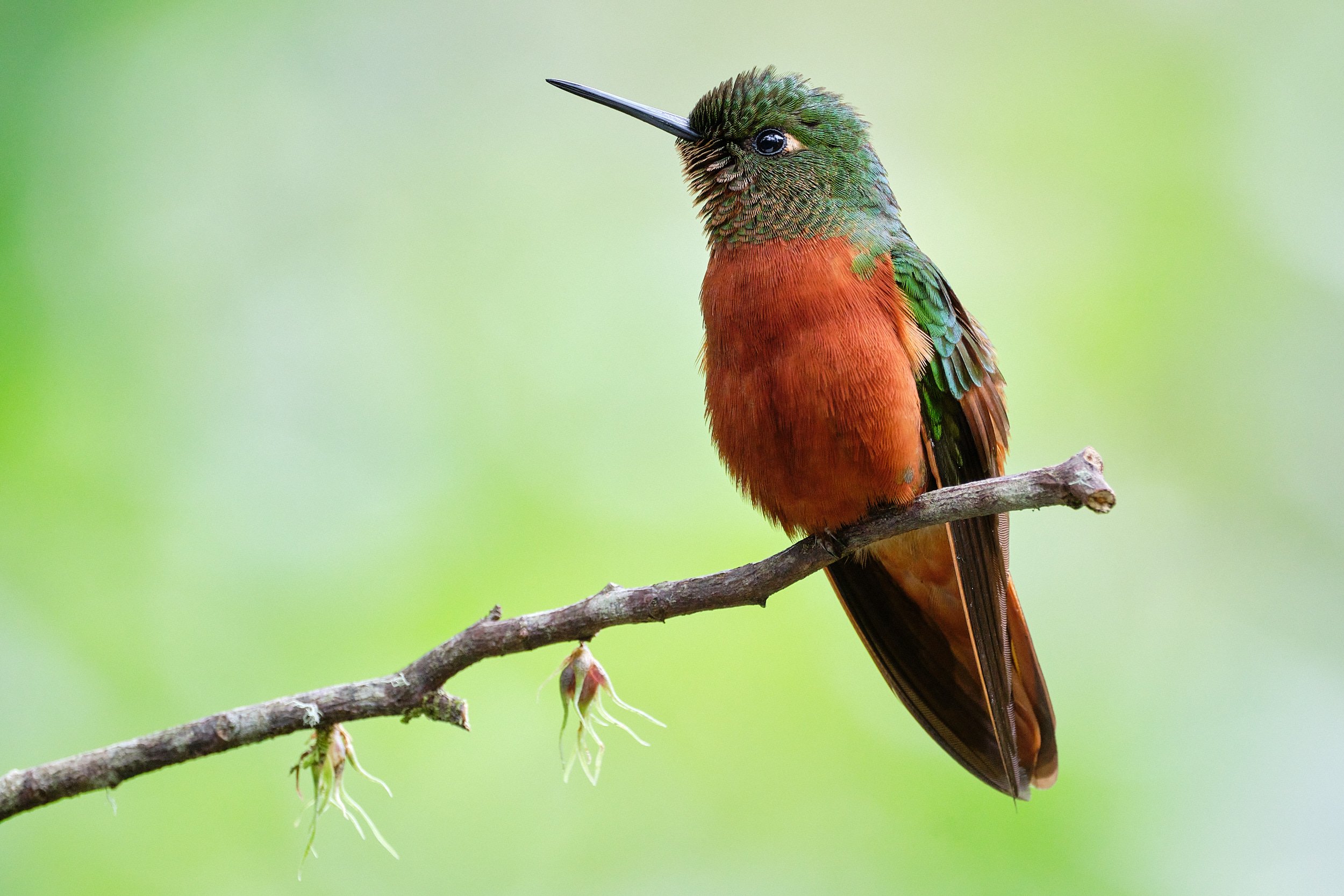
Chestnut-breasted coronet, Ecuador
(Fujifilm X-H2S + XF150-600mmF5.6-8 R LM OIS WR at 600mm, f/8, 1/250 sec, ISO 2500)
Focusing is quiet and fast. Besides other subjects, I have photographed hummingbirds in flight, and everything worked flawlessly. These tiny birds are known for their ability to hover in flight in one place, which is a moment when they can be photographed even with a slightly slower shutter speed (if you do not mind the blurring of their rapidly moving wings). The problem is that outside the food source, they only stay like this for a short time (which is often an ugly plastic feeder in lodges). On the other hand, they fly from one place to another very swiftly, and when they stop elsewhere, it is necessary to compose and focus quickly. The cooperation of the lens with the new X-H2S worked nicely with the help of the new animal detection feature. Of course, in low light, focusing can struggle to grab the subject due to the lower aperture. In such cases, if you are focusing on a closer subject, the lens may hunt in the full range, which can be slow. The solution for similar situations can be the focus limiter (on the lens or configurable one in the camera) or the mentioned AF Preset function, which by pressing a button on the lens focuses back to previously stored distance.
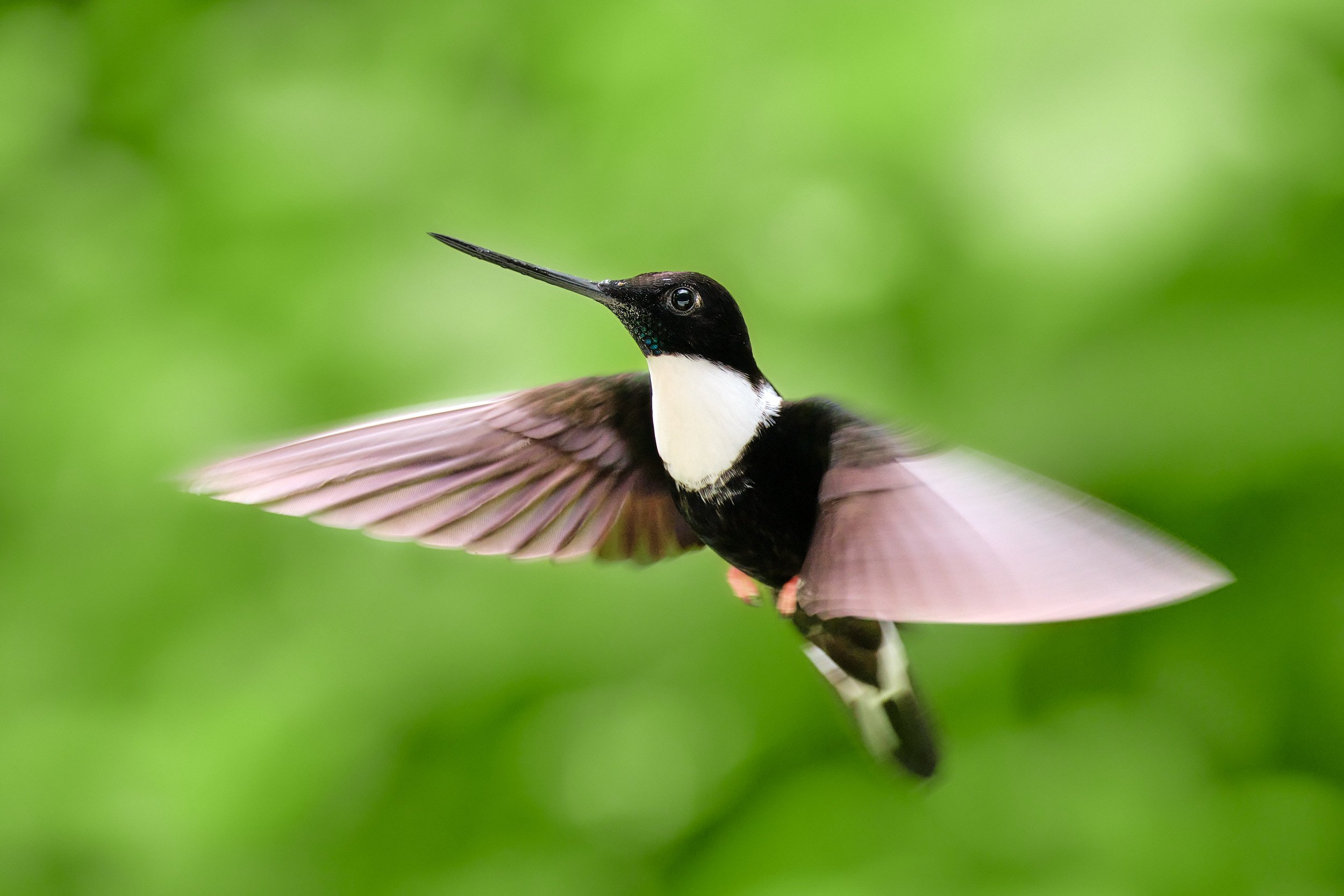
(Fujifilm X-H2S + XF150-600mmF5.6-8 R LM OIS WR at 451mm, f/8, 1/250 sec, ISO 1250)
In Norway, I was shooting with my trusty X-T4 body, which has no animal detection (yet?), so I had to work with the manual focus point selection. Even so, I did not encounter any problems. However, I should note that the open environment of mountains provides fairly good conditions compared to dark rainforests full of objects that can confuse the autofocus. The only time I had some doubts about focusing was when shooting videos — a couple of times, I tried to refocus on muskox that wandered out of focus during the recording, and sometimes I ended up with the lens refocusing back and forth before catching back on the animal. I do not recall a similar thing happening on the X-H2S, but I did not test them side by side under the same conditions.
I am very happy with the optical stabilization. In cooperation with the IBIS in the X-T4 and X-H2S bodies, I have shot at the maximum focal length equivalent of 900mm at 1/60 sec without problems, and I have some acceptably sharp images captured at around 1/25 s. Other photographers’ mileage may vary because the result depends on shooting conditions and how steady one’s hand is. I have been using 1/60 sec for years as the base shutter speed for my XF100-400mm, so I can probably call myself pretty practiced.
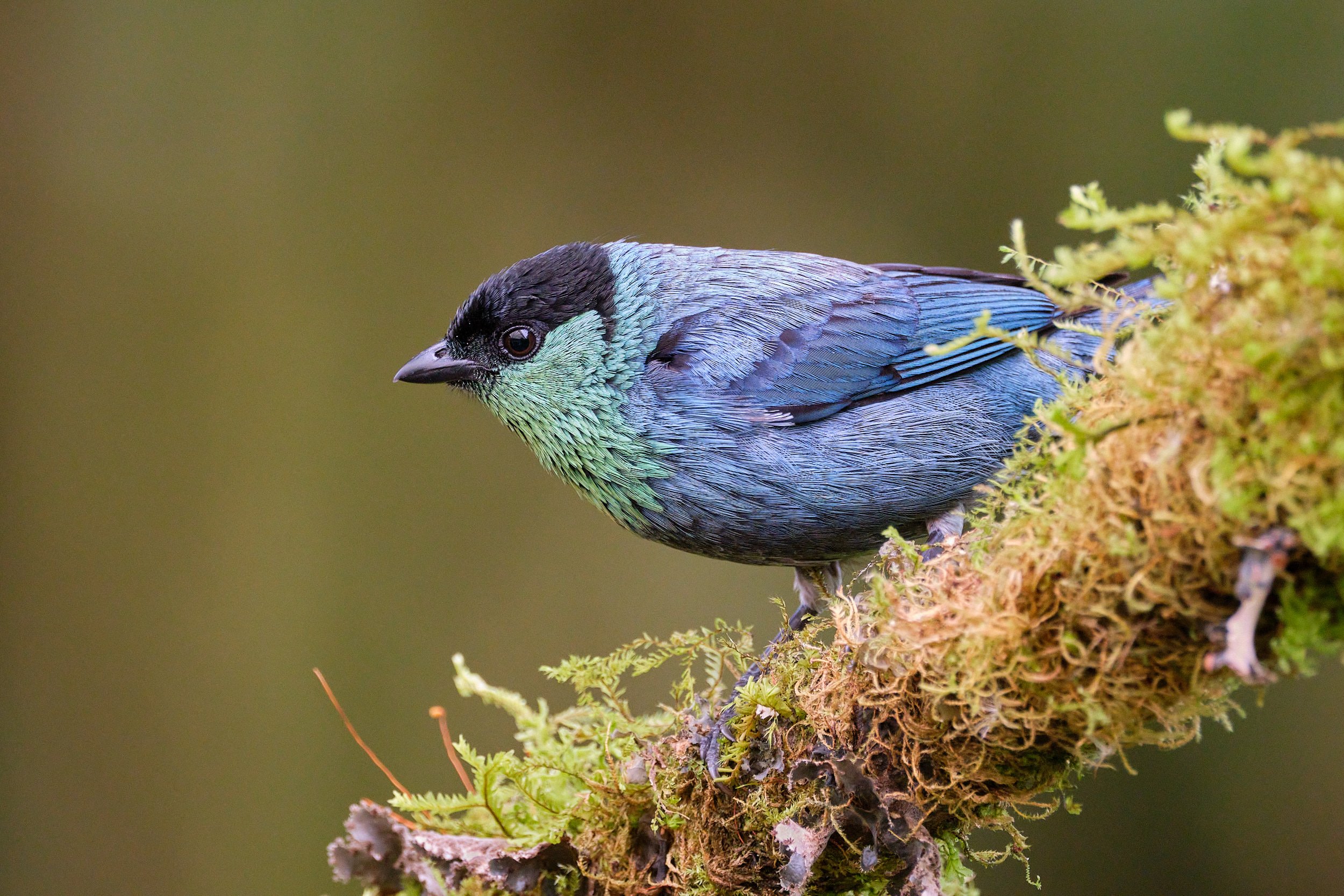
Black-capped tanager, Ecuador
(Fujifilm X-H2S + XF150-600mmF5.6-8 R LM OIS WR at 600mm, f/8, 1/60 sec, ISO 8000)
Long focal lengths are also great for photographing small subjects such as insects or smaller vertebrates. The XF150-600mm is no exception and performs even better than the XF100-400mm in this respect, achieving around 20% more magnification. The ratio is roughly 1:4 at the minimum focusing distance of 2.4 m and maximum focal length, which means the ability to capture an area of about 10×6.5 cm. From this distance, it is sometimes harder for ground-dwelling animals to achieve an optimal composition where nothing obstructs the view. But on the other hand, the chances of not scaring off the shy animals also increase.
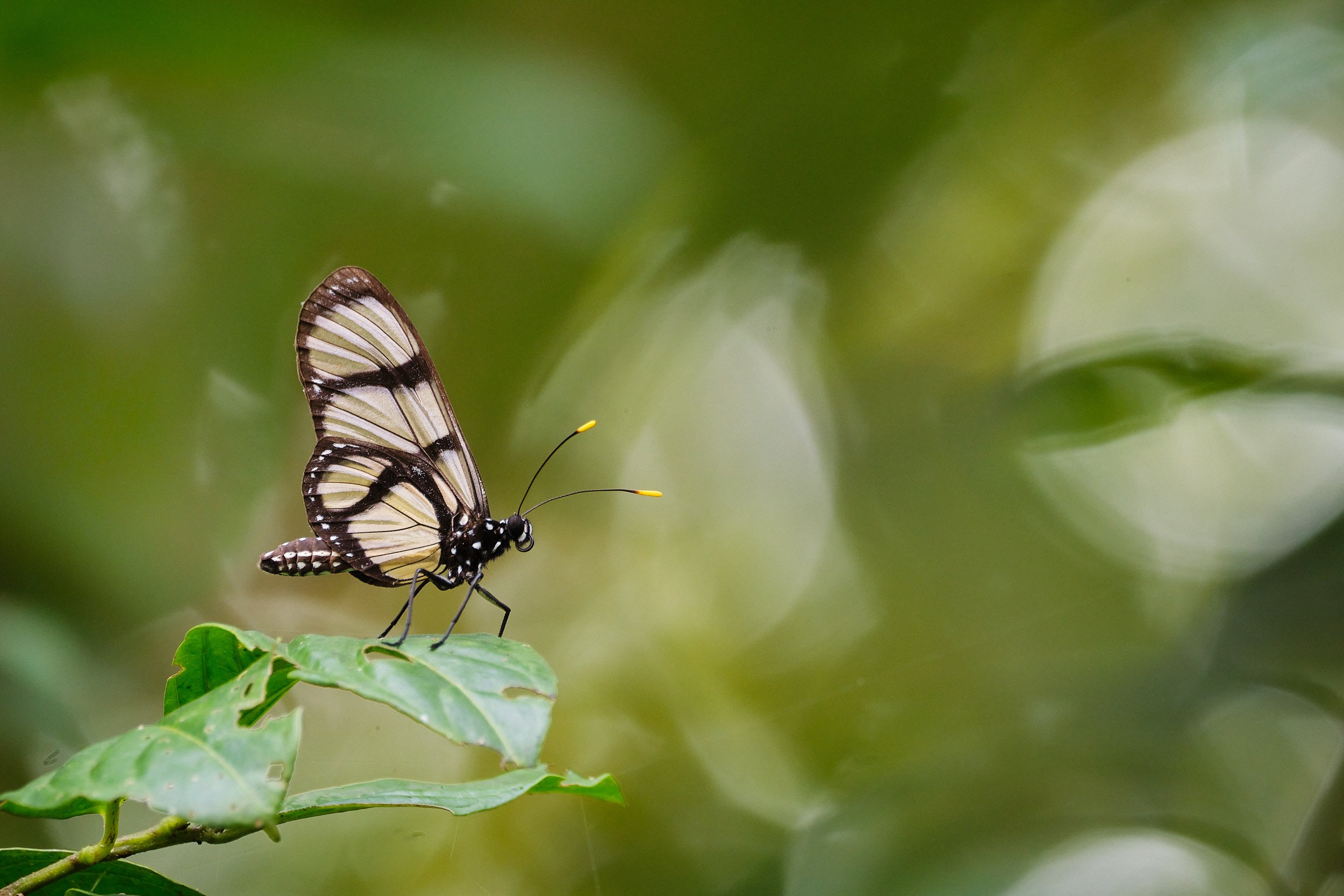
Tropical butterfly, perhaps Methona confusa, Ecuador
(Fujifilm X-H2S + XF150-600mmF5.6-8 R LM OIS WR at 600mm, f/8, 1/60 sec, ISO 1600)
Both trips also showed me some disadvantages of shooting with such a focal length. Basically, this is not a lens issue but simply the difficulty of working with a similar magnification level. The first problem is that extremely long focal lengths multiply every flaw and imaginary obstacle put in your way to a perfect photo. If you move your hand a millimeter when shooting with a wide-angle lens, it will have an order of magnitude less effect on sharpness than if you do the same with a 900mm lens. Similarly, any movement of the animal is more noticeable at maximum magnification. When shooting from a distance (which a focal length naturally encourages), you may encounter more problems with heat distortion — this was a huge problem in the Norwegian mountains, where many photos ended up in the trash because of the local blurring caused by this phenomenon.
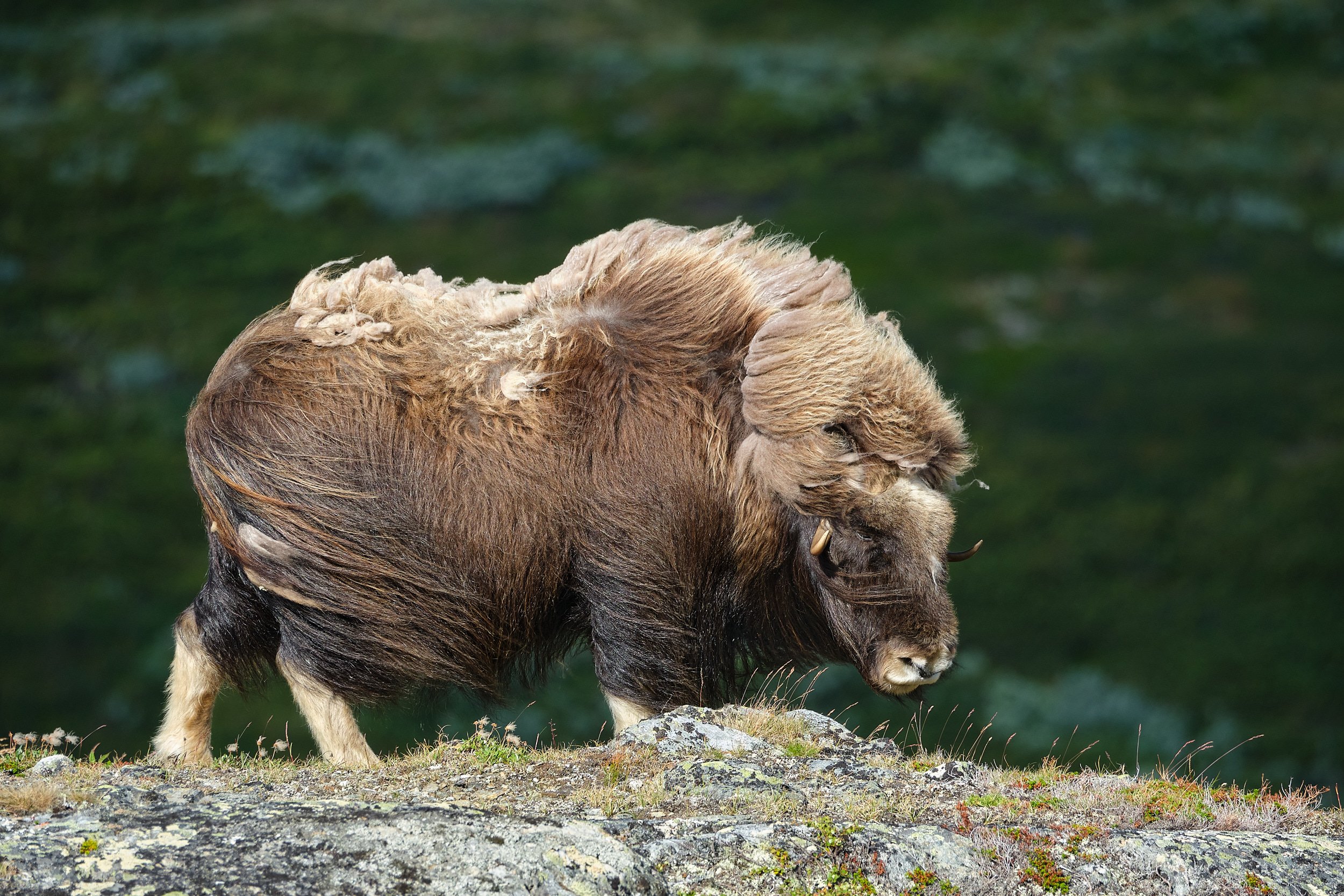
Musk ox, Norway
(Fujifilm X-T4 + XF150-600mmF5.6-8 R LM OIS WR at 502mm, f/8, 1/500 sec, ISO 500)
From my rich experience with the shorter XF100-400mm, I can also say that increasing the focal length to 600mm has increased the difficulty of finding the subject through the viewfinder — it simply requires the photographer to aim more precisely. While at the 400mm, I can typically get the animal into the viewfinder on the first try, with the 600mm, I sometimes failed to aim some birds repeatedly and had to zoom out a bit, which is, of course, the usual method for such cases (and advantage of the zoom). I expect that after longer getting to know the lens, my accuracy will probably improve, but you should know that besides the advantages, very long lenses also bring some pitfalls. Actually, I should mention one more: it seems to me that with such a long focal length, the subconscious desire to always capture the animal across the field increases, which is indeed the purpose for which the lens was created, but it is a shame not to take advantage of the more open compositions that shorter lens sometimes leads to naturally (I know, it is virtue out of necessity, but still).
I have spent three weeks of fairly intensive use with the lens in the field, from photographing large mammals in the open Norwegian alpine tundra to finding the usually much smaller, swifter, and more hidden inhabitants of the dark Ecuadorian rainforests. It is definitely a great lens for bird photography — it worked perfectly, especially with smaller species such as various songbirds. For larger animals, it allows for less intrusive photography or capturing them in detail, which are also clear advantages. But at the same time, you have to consider that the smaller aperture can limit you in some situations — either in low light or when the background needs to be blurred more. Even at f/8, you can surely achieve beautiful bokeh, but you have to think more about the scene, and it is not always easy to solve.
Those who regularly follow my work are probably waiting for an answer to one more question: will I use one? The answer is simple. While I am not a fan of chasing the longest possible focal length, this lens appealed to me, and I already miss it. I will not be selling my beloved XF100-400mm, which will remain an option for packing light, but I have already placed the order for the XF150-600mm. Because I enjoy shooting with it so much :)
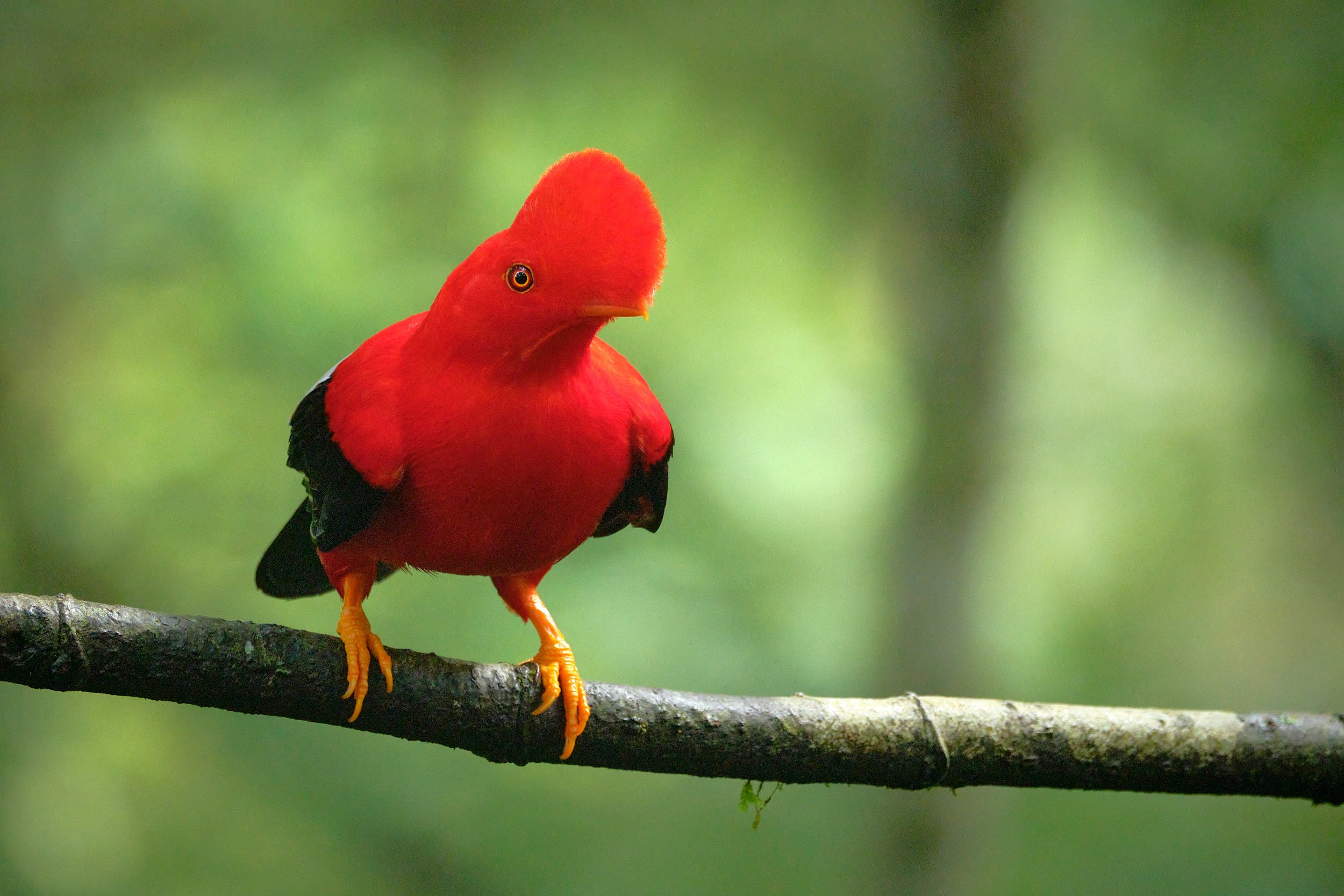
Andean cock-of-the-rock, Ecuador
(Fujifilm X-H2S + XF150-600mmF5.6-8 R LM OIS WR at 600mm, f/8, 1/125 sec, ISO 5000)
All the photos in the article were edited using only the standard techniques in Capture One, as I always do with my photos. I did not apply preprocessing or postprocessing in specialized tools for sharpening or noise reduction. In the case of the collared inca image, I edited the background separately, but again only in Capture One using the Clarity and Color Editor tools.
